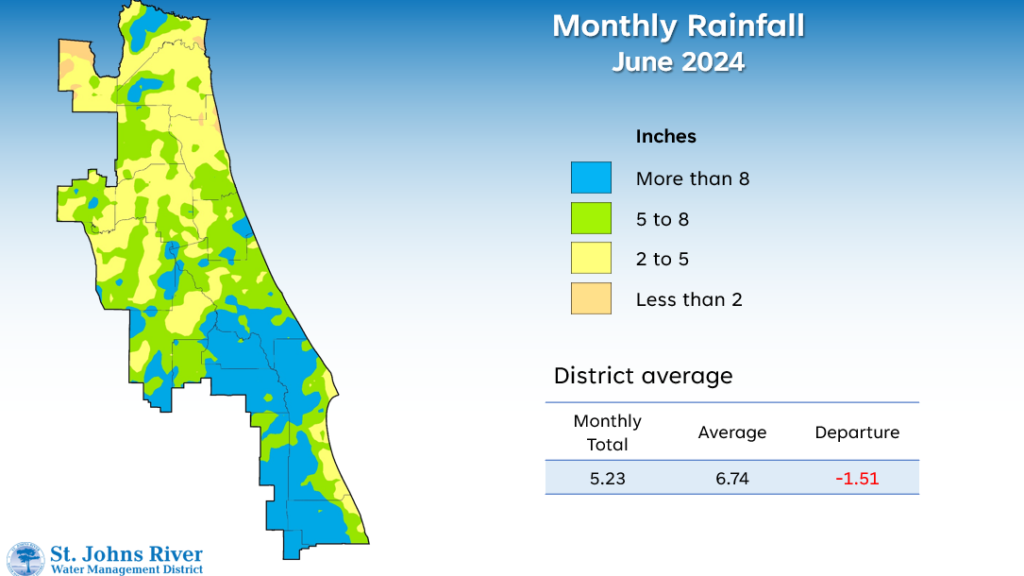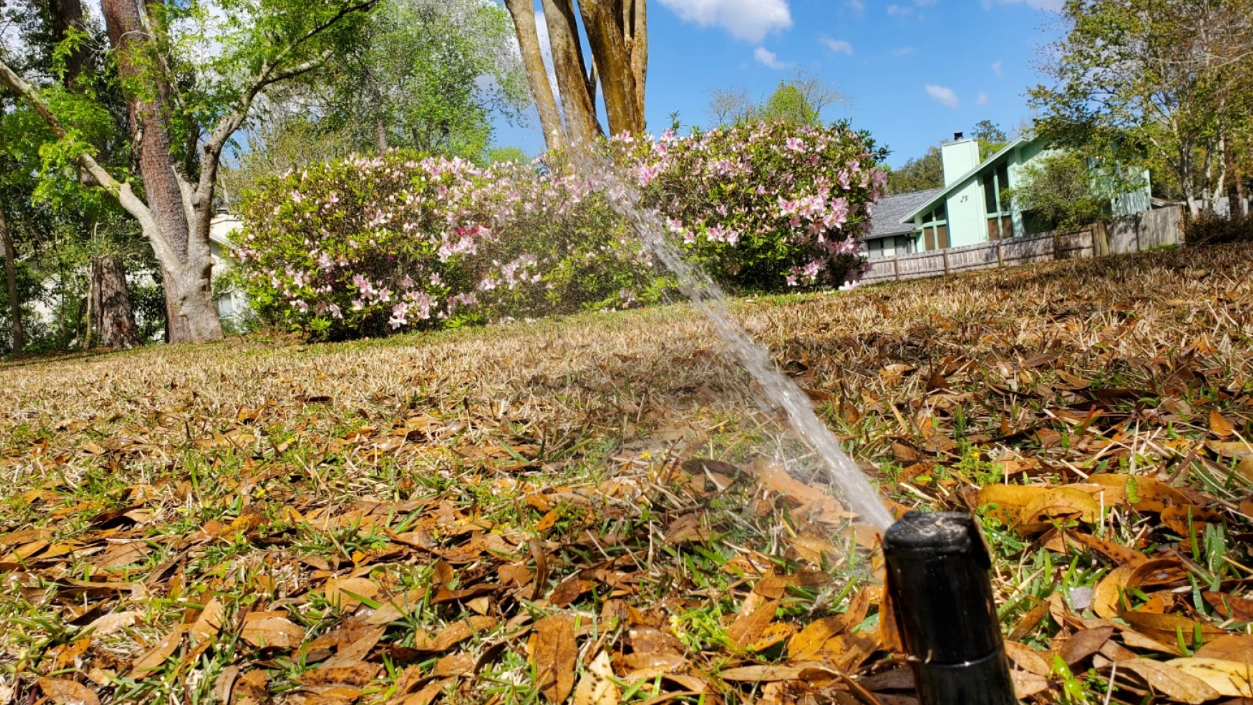Despite recent thunderstorms, Northeast Florida remains abnormally dry, and residents are being asked to conserve water.
Rainfall in June was below average for the fifth consecutive month across the St. Johns River Water Management District’s 18-county region, the district said.
“Rainfall continued to be scarce and unevenly distributed in June, with 14 counties receiving less than their monthly average,” the district said in a news release Thursday. In some areas, the deficit was more than 2 inches, with Baker County receiving 4.5 inches below normal.

The district covers more than 12,000 square miles of North and Central Florida along the St. Johns River, including all or parts of Alachua, Baker, Bradford, Brevard, Clay, Duval, Flagler, Indian River, Lake, Marion, Nassau, Okeechobee, Orange, Osceola, Putnam, St. Johns, Seminole and Volusia counties.
As the summer goes on, district officials ask the public to be mindful of water use until regular rainfalls return. JEA also offered tips Thursday to conserve water, saying that leaks are the main reason customers see their water consumption increase.
About 35% to 50% of the water used outdoors is wasted because of evaporation, runoff and more, JEA stated in a conservation bulletin.
The average household’s leaks can account for nearly 10,000 gallons of water wasted every year, the bulletin said. Common leaks include worn toilet flappers, dripping faucets and other leaking valves.
To further conserve, only irrigate when needed, following the assigned watering days in the early mornings before sunrise to avoid evaporation and runoff, JEA said. And check to make sure the irrigation system is running properly, including your rain sensor, so water isn’t being wasted.
JEA offers free in-home assessments of energy efficiency and irrigation. You can schedule here.
The St. Johns River Water Management District reported Tuesday that average rainfall in the district totaled 5.23 inches in June, 1.51 inches below the monthly average. Rainfall for the past 12 months amounted to 51.10 inches, 0.09 inches above the long-term average. Ten counties are now below their annual average, with Alachua County nearing 7 inches below its average, district officials said.
Coastal and northern counties had the highest 12-month rainfall totals in the June report, with Volusia County receiving over 5 inches above average.
Upper Floridan aquifer conditions generally fell within the normal range by the end of June, with groundwater levels districtwide normal for this time of year. But conditions were trending lower in the central and northern region.







